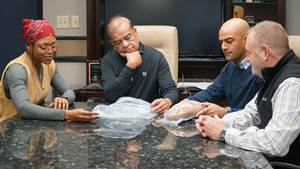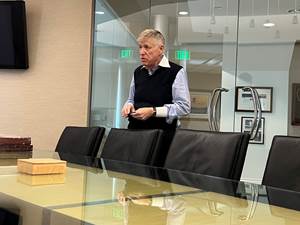Your Business Outlook - January 2009
Injection Molded Packaging: Slow Start in ’09, Stronger Finish
Domestic output of injection molded packaging decreased by 6% in 2008, and the decline accelerated as the year ended.
Domestic output of injection molded packaging decreased by 6% in 2008, and the decline accelerated as the year ended. We forecast that market demand will stabilize in the first half of 2009 followed by a moderate increase in the second half. Overall production of molded packaging will rebound 3% in 2009. The most stable sectors will continue to be lids and caps for food and beverage markets and also containers and lids for cosmetics and toiletries.
One factor that will benefit molders of packaging is the recent sharp decline in the price of resins. Those prices correlate closely with the price of crude oil, and oil prices have dropped over 60% since hitting a peak last July. The decline in resin prices has not been quite as dramatic so far, but barring an unforeseen shock to the market, the trend will continue downward through 2009. Materials costs for molders may end up as much as 50% lower this year on average than they were in 2008.
Unfortunately, the main reason for the declines in both oil and materials prices is the recession in the U.S. economy. And though consumer spending for non-durable goods such as food and cosmetics is less volatile than spending for durable goods like cars and appliances, the recession is clearly having a negative effect on demand for all molded plastics products, including packaging. The recession officially began in the first quarter of 2008, and if it ends in the second quarter of 2009 as expected, it will be the most severe downturn since World War II.
HOW TO SPOT AN UPTURN
Whether the recession ends in the third quarter of this year or sometime later, it will end. So molders of packaging should pay close attention to the timing of the various segments of the business cycle in order prepare for the recovery phase. The first thing to watch for is a decline in the cost of commodities and materials such as oil, resins, and steel. As mentioned, this already started in the fourth quarter of 2008.
As commodities prices fall, the next thing to watch for is a drop in interest rates and stabilization in equities markets. The Fed is already aggressively lowering interest rates, and it may next start to purchase equities if the market does not find the bottom on its own. Stabilization of equities markets will be a major theme in the financial press during the first quarter of 2009. This is because the economy will not recover during a bear market.
Once interest rates are lowered, the next indicators to rebound will be those that measure activity in residential construction and real estate. The bursting bubble in these sectors was what started this recession, and it will likely take another few quarters to get these sectors back to something akin to normal. But home prices and housing starts must find a bottom before the economy can start to recover. Look for this in mid-2009.
When these conditions are met, it will signal the beginning of a self-sustaining recovery. Molders of packaging products should see a moderate but immediate increase in demand because spending for less expensive, non-durable goods will rebound quickly. Late this year or early in 2010, there also should be an increase in spending for durable goods such as autos and appliances.
Though the order in which the sectors will start to recover is reasonably certain, the timing is not. There is plenty of risk, both downside and upside, to this forecast. Crude oil prices are volatile, and that means that resin prices are also unpredictable. The fact that the U.S. has a new President, Cabinet, and Congress also adds some uncertainty to the outlook. Molders of packaging products typically deal with products that are high volume, but low margin. That means that forecasts and marketing plans need to be monitored closely if costly mistakes are to be avoided.
About the Author
Bill Wood, an independent economist specializing in the plastics industry, heads up Mountaintop Economics & Research, Inc. in Greenfield, Mass. He can be contacted by e-mail at BillWood@PlasticsEconomics.com. His monthly Injection Molding and Extrusion Business Indexes are available at www.ptonline.com.
Related Content
Breaking the Barrier: An Emerging Force in 9-Layer Film Packaging
Hamilton Plastics taps into its 30-plus years of know-how in high-barrier films by bringing novel, custom-engineered, nine-layer structures resulting from the investment in two new lines.
Read MoreUS Merchants Makes its Mark in Injection Molding
In less than a decade in injection molding, US Merchants has acquired hundreds of machines spread across facilities in California, Texas, Virginia and Arizona, with even more growth coming.
Read MorePHA Compound Molded into “World’s First” Biodegradable Bottle Closures
Beyond Plastic and partners have created a certified biodegradable PHA compound that can be injection molded into 38-mm closures in a sub 6-second cycle from a multicavity hot runner tool.
Read MoreMultilayer Solutions to Challenges in Blow Molding with PCR
For extrusion blow molders, challenges of price and availability of postconsumer recycled resins can be addressed with a variety of multilayer technologies, which also offer solutions to issues with color, processability, mechanical properties and chemical migration in PCR materials.
Read MoreRead Next
Beyond Prototypes: 8 Ways the Plastics Industry Is Using 3D Printing
Plastics processors are finding applications for 3D printing around the plant and across the supply chain. Here are 8 examples to look for at NPE2024.
Read MoreLead the Conversation, Change the Conversation
Coverage of single-use plastics can be both misleading and demoralizing. Here are 10 tips for changing the perception of the plastics industry at your company and in your community.
Read MoreMaking the Circular Economy a Reality
Driven by brand owner demands and new worldwide legislation, the entire supply chain is working toward the shift to circularity, with some evidence the circular economy has already begun.
Read More














